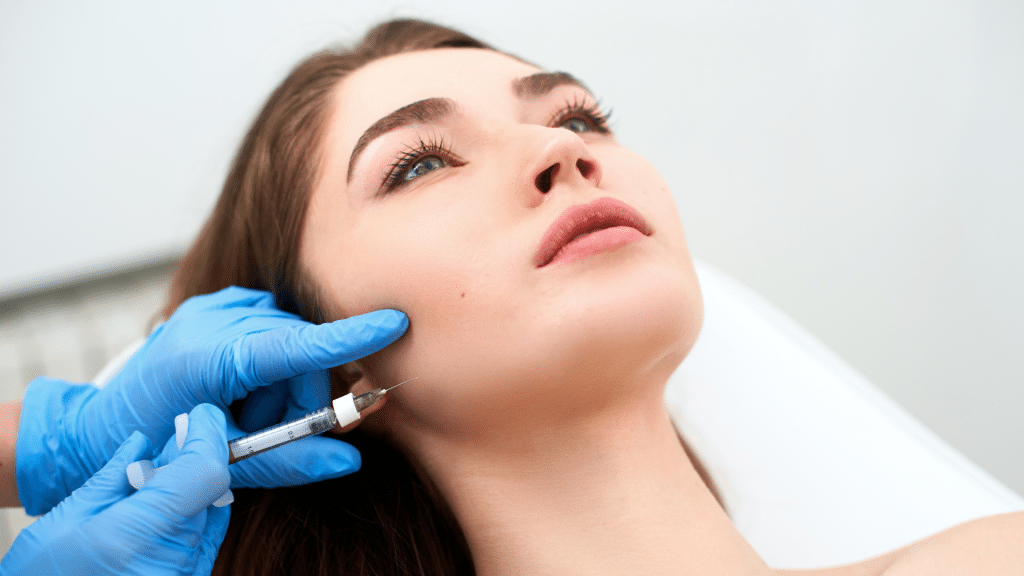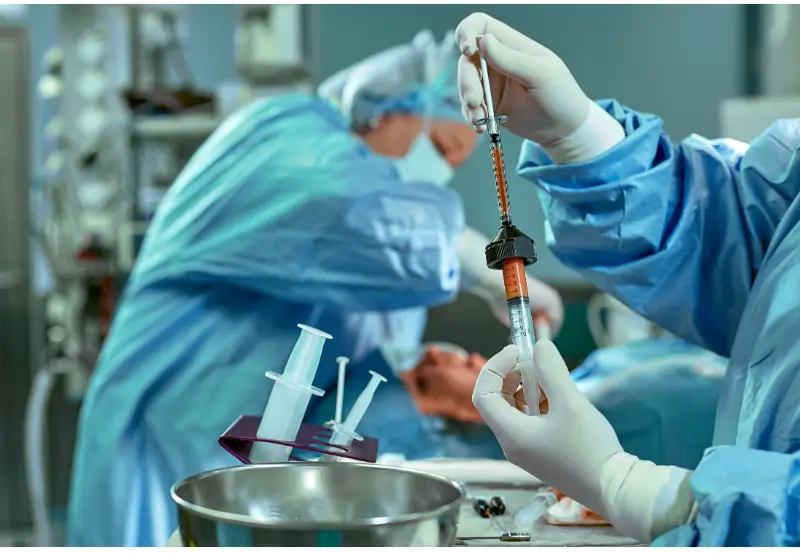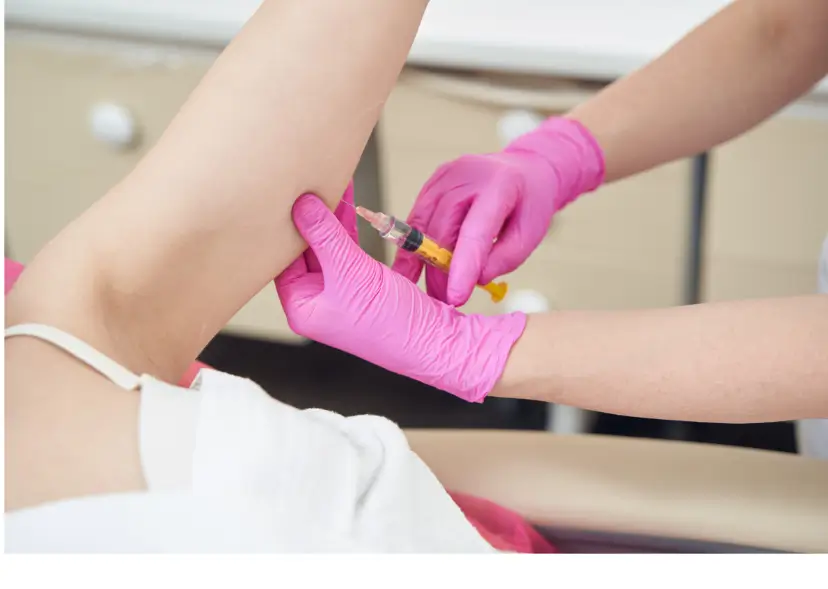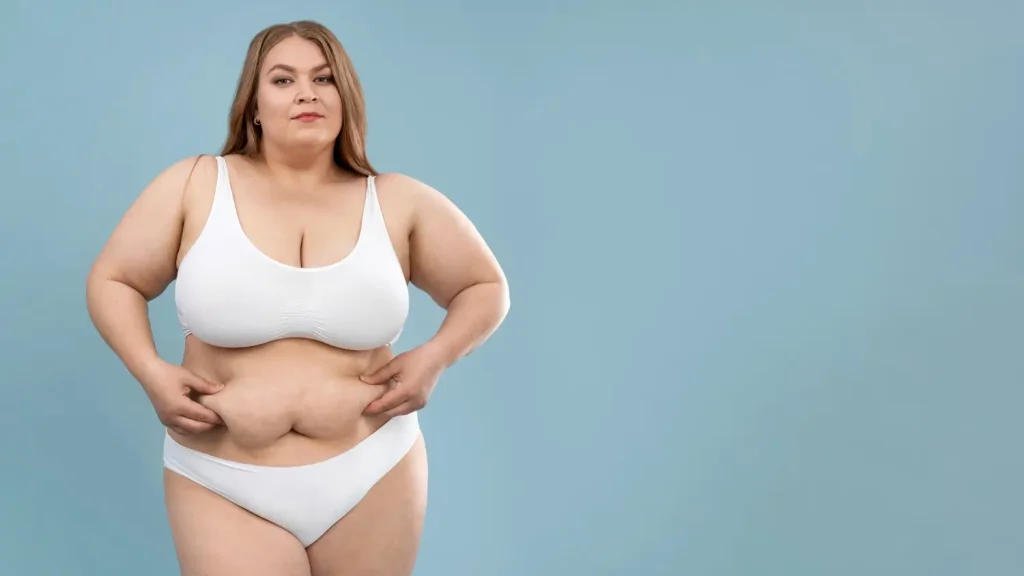Jowls are sagging skin below the chin or jawline, a natural part of aging. Over time, the skin loses collagen and elastin, resulting in a loss of firmness and tightness that reveals this characteristic droop. Genetics, environmental influences, and lifestyle choices can impact the severity and onset of jowls.
Radiesse emerges as a solution to this concern. This dermal filler addresses the sagging jowls by restoring lost volume and promoting collagen production, offering a non-surgical approach to reclaim the jawline’s youthful contour.
In this article, we will explore the transformative journey of Radiesse before and after jowls treatment.
Key Takeaways
- Radiesse is a dermal filler that helps fix sagging jowls by adding volume and encouraging the body to make more collagen. This process makes the jawline look better.
- The treatment works well for adults not too young or old, usually between 35 and 60. They must have realistic hopes about what Radiesse can do.
- After getting Radiesse, patients should take it easy for a day and avoid applying certain types of makeup. This process helps them heal without much swelling or pain.
- Follow-up visits with the doctor are needed to check how well the treatment worked and if more touches are required. Going back every so often keeps the results looking promising.
- While most people don’t have big problems after getting Radiesse, some might experience swelling, pain, or other side effects. Doctors will tell patients how to care for themselves at home and when to call for help.
About: Medical Spa RX provides premium products at the best prices for medical practices. If you want to buy Radiesse for your practice, the sales representatives at Medical Spa RX can guide you.
Understanding Jowls and Aesthetic Concerns

People don’t like seeing saggy jowls when they look in the mirror because they change how their face is shaped. Drooping jowls can be linked to various factors, such as facial aging, sagging, and even double chins. These concerns often lead professionals to seek treatments to improve facial structure by addressing loose skin around the chin ptosis or turkey neck areas.
Losing a lot of weight can make this even more noticeable. Everyone wants that sharp jawline back because it makes them feel better about their appearance, which shows why treating jowls matters so much for facial rejuvenation and contouring.
Introducing Radiesse for Jowls Treatment

Images Courtesy of Mabrie Facial Institute
Our skin loses its youthful firmness and elasticity as we age, leading to a common facial concern: sagging jowls. These droopy areas around the jawline can significantly impact appearance and confidence. Modern cosmetic procedures offer innovative solutions to address these aging signs effectively—one such treatment being Radiese injections.
Radiesse dermal filler is a go-to for smoothing facial wrinkles and folds, especially around the jowl area. It’s made of unique microspheres in a water-based gel that fills wrinkles and stimulates your skin to produce its natural collagen.

Images Courtesy of Mabrie Facial Institute
Radiesse works by smoothing and reshaping the area where the jawbone meets the chin to treat jowls. This process helps make the jowls much less noticeable. The filler is excellent for this job because it supports collagen stimulation in your skin.
Patient Selection and Consultation
Conducting a thorough consultation for jowls treatment is critical to creating a successful plan. This step ensures both doctor and patient have clear expectations about the journey ahead.
- Begin with an initial consultation led by a board-certified plastic surgeon or cosmetic dermatologist. This process is where you assess the severity of howling.
- Discuss the patient’s goals and expectations to understand what they hope to achieve with Radiesse injectables.
- Evaluate the patient carefully to decide if they are a good candidate for Radiesse treatment. Consider factors like skin quality and overall health.
- Explain how Radiesse works, focusing on addressing sagging jawlines through volumization.
- Capture standardized before and after images from 5 angles. This process helps track changes over time.
- Use these photos to show potential outcomes of the injectable treatments for jowls, setting realistic expectations.
- Address any questions or concerns the patient might have about the procedure, recovery, or results.
- Plan for follow-up appointments right from the start so you can assess progress and make any necessary adjustments.
Doctors must understand their patients’ feelings, thoughts, and wants well. This process helps them clarify what can happen after Radiesse treatments. Talking things through is critical. Patients should know what to expect from the start.
Injection Techniques for Jowls Treatment
Injecting Radiesse in the jowl area requires careful thought. The skin and tissues here are different from those of other face parts. Doctors must be very skilled at knowing where to inject for the best look and to keep it safe.
Experts say using the proper technique for Radiesse injections is critical to fixing saggy jowls. Knowing where and how deep to inject makes a big difference in getting that smooth, lifted look.
Doctors use unique methods to make injections less painful. They know how to perform different applications like injecting Radiesse in cheekbones and jowls, so it hurts less. Cooling the area right after helps keep swelling and pain down.
Post-Treatment Care and Follow-Up
Post-treatment care is critical for anyone who gets Radiesse injections. Doctors recommend avoiding hard workouts and staying out in intense sun or heat for a day. This helps reduce swelling and redness.
After a Radiesse treatment, patients often face common side effects like discomfort, pain, swelling, and bruising. Doctors should tell their patients about these risks beforehand. They also need to watch for itching, lumps, and redness that might show up later.
Scheduling follow-up appointments for assessment and touch-ups ensures that Radiesse treatments last longer. Doctors suggest scheduling these visits two to three months after the first treatment.
Conclusion
Radiesse treatments boost faces showing signs of aging, especially with saggy jowls. The before-and-after pictures tell a strong story where the skin looks fuller and more youthful days after the procedure.
This filler, focusing on volume restoration and facial contouring, brings back confidence with minimal fuss. Those seeking improvement find Radiesse a reliable ally against age’s visible marks.
FAQs
1. What does Radiesse do for jowls?
Radiesse helps lift and firm up the skin around your jawline, making jowls less noticeable.
2. How long before I see results from Radiesse treatment on my jowls?
You’ll start to see changes in about a week after getting Radiesse.
3. Is the treatment with Radiesse for jowls painful?
Most people feel just a quick pinch or discomfort during the injection.
4. How long does the effect of Radiese last on jowls?
The improvements can last up to a year or even longer for some folks.
5. Do I need to take time off work after getting Radiesse for my jowls?
You can return to your daily stuff immediately, though take it easy for the first day.
References
Healthline. (n.d.). Everything You Need to Know About Jowls. Retrieved from https://www.healthline.com/health/beauty-skin-care/jowls
Viscomi, B., Faria, G., Hernandez, C. A., Perez, L., Spada, J., De la Fuente, V., & Muniz, M. (2023). Contouring Plus: A Comprehensive Approach of the Lower Third of the Face with Calcium Hydroxylapatite and Hyaluronic Acid. Clinical, cosmetic and investigational dermatology, 16, 911–924. https://doi.org/10.2147/CCID.S400605
Loghem, J. V., Yutskovskaya, Y. A., & Philip Werschler, W. (2015). Calcium hydroxylapatite: over a decade of clinical experience. The Journal of clinical and aesthetic dermatology, 8(1), 38–49.





















